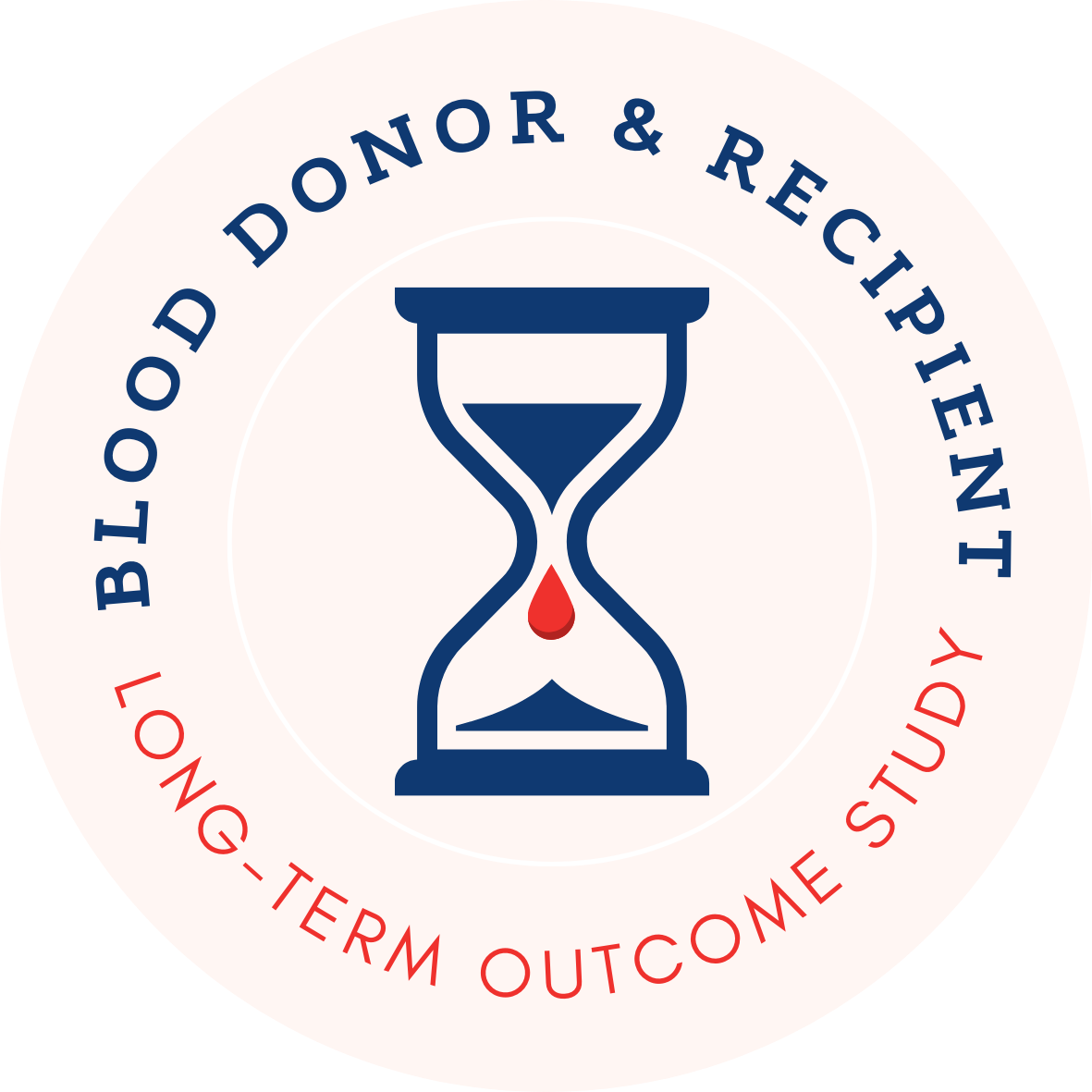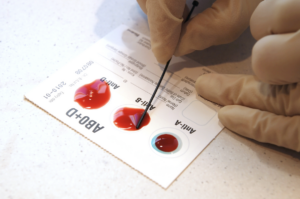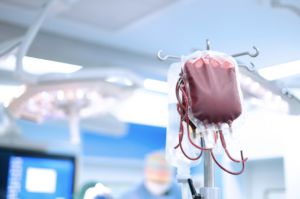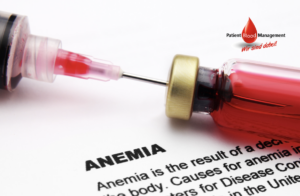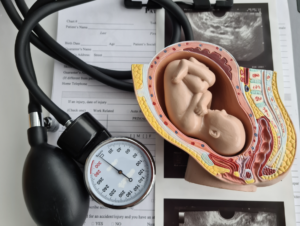
Physician
Dr. med. Michael Nordine
Dr. Michael Nordine is a professional anaesthesiologist and clinical scientist at Frankfurt University Hospital. He graduated from medical school from the Charité Medical University in 2017 and completed his doctoral thesis at the Center for Space Medicine and Extreme Environments at the Charité. Dr. Nordine then worked as an anesthesiologist at the Charité-Campus Benjamin Franklin as well as performing mono-and multi centre clinical studies. Additionally, taking part in the Berlin Institute of Health Digital Health Accelerator program. His diverse areas of specialisation include artificial gravity, clinical anaesthesiology, human physiology, non-invasive physiological monitoring, and data analysis. At LOS, Dr Nordine performs many important tasks in informing and enrolling patients, collaborating with other practitioners to improve data collection and analysing the data.
5 Years
-
August 2017
State Examination in Human Medicine
Julius-Maximilians-University Würzburg
-
October 2020
Administrative and scientific supervision at ENVISION
Horizon 2020 EU-funded project (6M €)
-
January 2021
Founder & leader of the Data Science Group Frankfurt
Interdisciplinary scientific working group at the Goethe University Frankfurt
-
February 2021
WAKWiN
Admission to the scientific working group for young scientists of the german society of anesthesiology and intensive care medicine (DGAI)
-
May 2021
Administrative and scientific supervision at COVend
Horizon Health 2021 EU-funded project (10 M €)
-
October 2025
Development and Deputy Study Director at LOS
Blood Donor & Recipient Long-Term Outcome Study
Recent Publications
NPJ Microgravity. 2025.
Impact of peripheral skin cooling on neuroendocrine leukocytic and hematological reactions during Hypergravity.
Optimal neuroendocrine responses are essential during hypergravity (+Gz) exposure. Peripheral skin cooling (PSC) may enhance neuroendocrine function, potentially improving +Gz resiliency and influencing leukocyte and hematologic factors. This study investigated whether PSC augments the cumulative +Gz stress index (CGSI) and shifts it toward noradrenergic dependency. Eighteen men underwent a graded +Gz profile in a crossover design, with PSC applied using Arctic Sun cooling pads. Neuroendocrine and blood profiles were assessed pre- and post-+Gz. CGSI did not differ between groups, but serum osmolality increased only in PSC (p = 0.03). In PSC, CGSI correlated with norepinephrine (p < 0.01, r = 0.71) and other markers, suggesting enhanced norepinephrine responsiveness despite similar serum levels. This response may be cardio-protective for space missions and ICU patients. Additionally, baseline serum metanephrine emerged as a potential marker for +Gz resilience, with PSC showing potential leukocytic and hematologic involvement in CGSI.
Front Physiol. 2025.
Peripheral skin cooling during gravitational challenges in parabolic flight - experimental protocol, implementation, and case study of the CoolFly experiment.
Ensuring cardiovascular stability is critical for the lasting and prosperous success of human spaceflight. Astronauts are exposed to dynamic acceleration profiles and prolonged changes of gravity which pose serious acute and long-term health risks. Parabolic flight is a model for gravity induced cardiovascular instability. In this proof-of-concept, we aim at analyzing the feasibility and effectiveness of peripheral cooling (PC) as a countermeasure during parabolic.
BMC Anesthesiol. 2025.
Outcome and complications in postcardiotomy cardiogenic shock treated with extracorporeal life support - a systematic review and meta-analysis.
Postcardiotomy cardiogenic shock (PCCS) in cardiac surgery is associated with a high rate of morbidity and mortality. Beside other therapeutic measures (e.g. intraaortic balloon pump (IABP)), extracorporeal life support is being increasingly used in this particular form of shock. Objectives of this meta-analysis were to determine mortality and complications of extracorporeal life support treatment (ECLS) in cardiac surgery patients, and if outcomes were influenced by a preexisting cardiovascular risk profile.
Braz J Cardiovasc Surg. 2024.
Feasibility of Goal-Directed Fluid Therapy in Patients with Transcatheter Aortic Valve Replacement - An Ambispective Analysis.
Goal-directed fluid therapy (GDFT) has been shown to reduce postoperative complications. The feasibility of GDFT in transcatheter aortic valve replacement (TAVR) patients under general anesthesia has not yet been demonstrated. We examined whether GDFT could be applied in patients undergoing TAVR in general anesthesia and its impact on outcomes.
BMC Anesthesiol. 2024.
Influence of a chronic beta-blocker therapy on perioperative opioid consumption - a post hoc secondary analysis.
Beta-blocker (BB) therapy plays a central role in the treatment of cardiovascular diseases. An increasing number of patients with cardiovascular diseases undergoe noncardiac surgery, where opioids are an integral part of the anesthesiological management. There is evidence to suggest that short-term intravenous BB therapy may influence perioperative opioid requirements due to an assumed cross-talk between G-protein coupled beta-adrenergic and opioid receptors. Whether chronic BB therapy could also have an influence on perioperative opioid requirements is unclear.
Eur J Anaesthesiol. 2023.
A comprehensive echocardiographic analysis during simulated hypovolaemia: An observational study.
Peri-operative and critically ill patients often experience mild to moderate hypovolaemic shock with preserved mean arterial pressure (MAP), heart rate (HR) and decreased stroke volume index (SVI).
Front Physiol. 2023.
Peripheral skin cooling during hyper-gravity: hemodynamic reactions.
Orthostatic dysregulation occurs during exposure to an increased gravitational vector and is especially common upon re-entering standard Earth gravity (1 g) after an extended period in microgravity (0 g). External peripheral skin cooling (PSC) has recently been described as a potent countermeasure against orthostatic dysregulation during heat stress and in lower body negative pressure (LBNP) studies. We therefore hypothesized that PSC may also be an effective countermeasure during hyper-gravity exposure (+Gz). To investigate this, we designed a randomized short-arm human centrifuge (SAHC) experiment ("Coolspin") to investigate whether PSC could act as a stabilizing factor in cardiovascular function during +Gz. Artificial gravity between +1 g and +4 g was generated by a SAHC. 18 healthy male volunteers completed two runs in the SAHC. PSC was applied during one of the two runs and the other run was conducted without cooling. Each run consisted of a 10-min baseline trial followed by a +Gz step protocol marked by increasing g-forces, with each step being 3 min long. The following parameters were measured: blood pressure (BP), heart rate (HR), stroke volume (SV), total peripheral resistance (TPR), cardiac output (CO). Furthermore, a cumulative stress index for each subject was calculated. +Gz led to significant changes in primary as well as in secondary outcome parameters such as HR, SV, TPR, CO, and BP. However, none of the primary outcome parameters (HR, cumulative stress-index, BP) nor secondary outcome parameters (SV, TPR, CO) showed any significant differences-whether the subject was cooled or not cooled. Systolic BP did, however, tend to be higher amongst the PSC group. In conclusion, PSC during +Gz did not confer any significant impact on hemodynamic activity or orthostatic stability during +Gz. This may be due to lower PSC responsiveness of the test subjects, or an insufficient level of body surface area used for cooling. Further investigations are warranted in order to comprehensively pinpoint the exact degree of PSC needed to serve as a useful countermeasure system during +Gz.
Sensors (Basel). 2023.
Intraoperative Beat-to-Beat Pulse Transit Time (PTT) Monitoring via Non-Invasive Piezoelectric/Piezocapacitive Peripheral Sensors Can Predict Changes in Invasively Acquired Blood Pressure in High-Risk Surgical Patients.
Non-invasive tracking of beat-to-beat pulse transit time (PTT) via piezoelectric/piezocapacitive sensors (PES/PCS) may expand perioperative hemodynamic monitoring. This study evaluated the ability for PTT via PES/PCS to correlate with systolic, diastolic, and mean invasive blood pressure (SBP, DBP, and MAP, respectively) and to detect SBP fluctuations.
J Cardiothorac Vasc Anesth. 2023.
Dexmedetomidine Sedation Combined With Remifentanil in MitraClip Procedures is Feasible and Improves Hemodynamics.
The objective of the study was to compare the overall feasibility, respiratory and hemodynamic stability, as well as process times of a dexmedetomidine-based sedative regimen compared with general anesthesia among patients undergoing MitraClip procedures.
Front Physiol. 2021.
The Human Dive Reflex During Consecutive Apnoeas in Dry and Immersive Environments: Magnitude and Synchronicity.
The human dive reflex (HDR), an O conserving reflex, is characterised by an interplay of central parasympathetic and peripheral sympathetic reactions, which are presumed to operate independently of each other. The HDR is fully activated during apnoea with facial immersion in water and complete immersion in water is thought to increase the magnitude of HDR during consecutive apnoeas. A comparison of HDR activity between consecutive apnoeas in full-body immersion with consecutive apnoeas in dry conditions has not been fully explored. Also, the interplay between parasympathetic and sympathetic reactions involved in the HDR has not been thoroughly analysed. 11 human volunteers performed 3 consecutive 60 s apnoeas with facial immersion in dry conditions (FIDC) and 3 consecutive apnoeas with facial immersion in full immersion (FIFI). Heart rate (HR), R-R interval (RRI), finger pulse amplitude (FPA), splenic width (SW) and SpO were all measured before, during and after apnoeas. A one-way ANOVA using Dunn's test was performed to assess HDR activity, and a Pearson's correlation test was performed to assess HDR synchronisation between physiological parameters during both conditions. Although HDR activity was not significantly different between both conditions, HR and RRI showed progressively greater changes during FIFI compared with FIDC, while SW and FPA changes were relatively equivalent. During FIDC, significant correlations were found between SW & SpO and FPA & SpO. During FIFI, significant correlations were found between RRI & FPA, SW & FPA, HR & SpO and FPA & SpO. While there was no significant difference found between HDR activity during FIDC and FIFI, consecutive apnoeas during FIFI triggered a greater magnitude of cardiac activity. Furthermore, significant correlations between RRI and SW with FPA indicate a crosstalk between parasympathetic tone with splenic contraction and increased peripheral sympathetic outflow during FIFI compared to FIDC. In conclusion, HDR activity during consecutive apnoeas does not differ between FIDC and FIFI. There appears to be however a greater level of synchronicity during apnoeas in FIFI compared to FIDC and that this is most likely due to the physiological effects of immersion, which could induce neural recruitment and increased cross talk of HDR pathways.
Front Physiol. 2021.
Orthostatic Resiliency During Successive Hypoxic, Hypoxic Orthostatic Challenge: Successful vs. Unsuccessful Cardiovascular and Oxygenation Strategies.
Rapid environmental changes, such as successive hypoxic-hypoxic orthostatic challenges (SHHOC) occur in the aerospace environment, and the ability to remain orthostatically resilient (OR) relies upon orchestration of physiological counter-responses. Counter-responses adjusting for hypoxia may conflict with orthostatic responses, and a misorchestration can lead to orthostatic intolerance (OI). The goal of this study was to pinpoint specific cardiovascular and oxygenation factors associated with OR during a simulated SHHOC. Thirty one men underwent a simulated SHHOC consisting of baseline (P0), normobaric hypoxia (Fi02 = 12%, P1), and max 60 s of hypoxic lower body negative pressure (LBNP, P2). Alongside anthropometric variables, non-invasive cardiovascular, central and peripheral tissue oxygenation parameters, were recorded. OI was defined as hemodynamic collapse during SHHOC. Comparison of anthropometric, cardiovascular, and oxygenation parameters between OR and OI was performed via Student's -test. Within groups, a repeated measures ANOVA test with Holm-Sidak test was performed. Performance diagnostics were performed to assess factors associated with OR/OI (sensitivity, specificity, positive predictive value PPV, and odd's ratio OR). Only 9/31 were OR, and 22/31 were OI. OR had significantly greater body mass index (BMI), weight, peripheral Sp02, longer R-R Interval (RRI) and lower heart rate (HR) at P0. During P1 OR exhibited significantly higher cardiac index (CI), stroke volume index (SVI), and lower systemic vascular resistance index (SVRI) than OI. Both groups exhibited a significant decrease in cerebral oxygenation (TOIc) with an increase in cerebral deoxygenated hemoglobin (dHbc), while the OI group showed a significant decrease in cerebral oxygenated hemoglobin (02Hbc) and peripheral oxygenation (TOIp) with an increase in peripheral deoxygenated hemoglobin (dHbp). During P2, OR maintained significantly greater CI, systolic, mean, and diastolic pressure (SAP, MAP, DAP), with a shortened RRI compared to the OI group, while central and peripheral oxygenation were not different. Body weight and BMI both showed high sensitivity (0.95), low specificity (0.33), a PPV of 0.78, with an OR of 0.92, and 0.61. P0 RRI showed a sensitivity of 0.95, specificity of 0.22, PPV 0.75, and OR of 0.99. Delta SVI had the highest performance diagnostics during P1 (sensitivity 0.91, specificity 0.44, PPV 0.79, and OR 0.8). Delta SAP had the highest overall performance diagnostics for P2 (sensitivity 0.95, specificity 0.67, PPV 0.87, and OR 0.9). Maintaining OR during SHHOC is reliant upon greater BMI, body weight, longer RRI, and lower HR at baseline, while increasing CI and SVI, minimizing peripheral 02 utilization and decreasing SVRI during hypoxia. During hypoxic LBNP, the ability to remain OR is dependent upon maintaining SAP, via CI increases rather than SVRI. Cerebral oxygenation parameters, beyond 02Hbc during P1 did not differ between groups, suggesting that the during acute hypoxia, an increase in cerebral 02 consumption, coupled with increased peripheral 02 utilization does seem to play a role in OI risk during SHHOC. However, cardiovascular factors such as SVI are of more value in assessing OR/OI risk. The results can be used to implement effective aerospace crew physiological monitoring strategies.
Cardiovasc Drugs Ther. 2021.
Chronic Naltrexone Therapy Is Associated with Improved Cardiac Function in Volume Overloaded Rats.
Myocardial opioid receptors were demonstrated in animals and humans and seem to colocalize with membranous and sarcolemmal calcium channels of the excitation-contraction coupling in the left ventricle (LV). Therefore, this study investigated whether blockade of the cardiac opioid system by naltrexone would affect cardiac function and neurohumoral parameters in Wistar rats with volume overload-induced heart failure.
J Cardiothorac Vasc Anesth. 2021.
Current Anesthetic Care of Patients Undergoing Transcatheter Aortic Valve Replacement in Europe: Results of an Online Survey.
Transcatheter aortic valve replacement (TAVR) has become an alternative treatment for patients with symptomatic aortic stenosis not eligible for surgical valve replacement due to a high periprocedural risk or comorbidities. However, there are several areas of debate concerning the pre-, intra- and post-procedural management. The standards and management for these topics may vary widely among different institutions and countries in Europe.
J Clin Med. 2021.
Echocardiographic Evaluation of Right Ventricular (RV) Performance over Time in COVID-19-Associated ARDS-A Prospective Observational Study.
(1) Background: To evaluate time-dependent right ventricular (RV) performance in patients with COVID-19-associated acute respiratory distress syndrome (ARDS) undergoing intensive care (ICU) treatment. (2) Methods: This prospective observational study included 21 ICU patients with COVID-19-associated ARDS in a university hospital in 2020 (first wave). Patients were evaluated by transthoracic echocardiography at an early (EE) and late (LE) stage of disease. Echocardiographic parameters describing RV size and function as well as RV size in correlation to PO/FO ratio were assessed in survivors and nonsurvivors. (3) Results: Echocardiographic RV parameters were within normal range and not significantly different between EE and LE. Comparing survivors and nonsurvivors revealed no differences in RV performance at EE. Linear regression analysis did not show a correlation between RV size and PO/FO ratio over all measurements. Analysing EE and LE separately showed a significant increase in RV size correlated to a lower PO/FO ratio at a later stage of COVID-19 ARDS. (4) Conclusion: The present study reveals neither a severe RV dilatation nor an impairment of systolic RV function during the initial course of COVID-19-associated ARDS. A trend towards an increase in RV size in correlation with ARDS severity in the second week after ICU admission was observed.
Front Physiol. 2018.
Limb Skin Temperature as a Tool to Predict Orthostatic Instability.
Orthostatic instability is one of the main consequences of weightlessness or gravity challenge and plays as well a crucial role in public health, being one of the most frequent disease of aging. Therefore, the assessment of effective countermeasures, or even the possibility to predict, and thus prevent orthostatic instability is of great importance. Heat stress affects orthostatic stability and may lead to impaired consciousness and decrease in cerebral perfusion, specifically during the exposure to G-forces. Conversely, peripheral cooling can prevent orthostatic intolerance - even in normothermic healthy subjects. Indicators of peripheral vasodilation, as elevated skin surface temperatures, may mirror blood decentralization and an increased risk of orthostatic instability. Therefore, the aim of this study was to quantify orthostatic instability risk, by assessing in 20 fighter jet pilot candidates' cutaneous limb temperatures, with respect to the occurrence of G-force-induced almost loss of consciousness (ALOC), before and during exposure to a push-pull maneuver, i.e., head-down tilt, combined with lower body negative pressure. Peripheral skin temperatures from the upper and lower (both proximal and distal) extremities and core body temperature via heat-flux approach (i.e., the Double Sensor), were continuously measured before and during the maneuver. The 55% of subjects that suffered an ALOC during the procedure had higher upper arm and thigh temperatures at baseline compared to the 45% that remained stable. No difference in baseline core body temperature and distal limbs (both upper and lower) skin temperatures were found between the two groups. Therefore, peripheral skin temperature data could be considered a predicting factor for ALOC, prior to rapid onset acceleration. Moreover, these findings could also find applications in patient care settings such as in intensive care units.
Registry Study for Research of Blood Donor and Recipient Long-Term Outcomes
The latest news, articles, and resources on transfusion medicine – follow our deputy study director, Dr Jan Kloka, on LinkedIn.
Address
Universitätsklinikum
Frankfurt am Main
KAIS – Haus 13a
Theodor-Stern-Kai 7
60596 Frankfurt am Main
Contact
© Copyright 2024 by transfusionregistry.org
